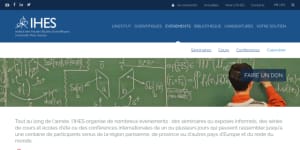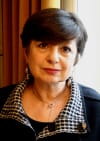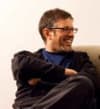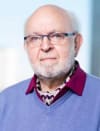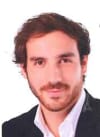
Talks of 2014
-
-
Aléatoire, historicité et complexité biologique
-
From the tissue organization field theory of carcinogenesis to a theory of organisms.
In 1999, C Sonnenschein and AM Soto proposed the tissue organization field theory (TOFT). The TOFT posits 1) that cancer is a tissue-based disease whereby carcinogens (directly) and germ-line mutations (indirectly) alter normal interactions between the stroma and adjacent epithelium; and 2) the default state of all cells is proliferation with variation and motility. This later premise is relevant to and compatible with evolutionary theory, and is diametrically opposed to that of the somatic mutation theory. This theoretical change is incompatible with the reductionist genocentric perspective generated by the molecular biology revolution. Rather than forcing a “bricolage” we decided to frontally attack the problem by joining efforts with philosophers, mathematicians and theoretical biologists to search for principles upon which to build a theory of organisms (this work is currently supported by the Pascal Chair). While the theory of evolution has provided an increasingly adequate explanation of phylogeny, biology still lacks a theory of organisms that would encompass ontogeny and life cycles, and thus phenomena on a conception to death time-scale. To achieve this goal we propose that theoretical extensions of physics are required in order to grasp the living state of matter. Such extensions will help to describe the proper biological observables, i.e. the phenotypes. Biological entities must also follow the underlying principles used to understand inert matter. However, these physical laws and principles may not suffice to make the biological dynamics intelligible at the phenotypic level. By analogy with classical mechanics, where the principle of inertiais the default state of inert matter, we are proposing two aspects of the default state in biology, and a framing principle, namely: i) Default state: cell proliferation with variation as a constitutive property of the living. Variation is generated in particular by the mere fact that cell division generates two overall similar, but not identical cells. ii) Default state: motility, which encompasses cell and organismic movements as well as movement within cells. iii) Framing principle: life phenomena exhibit never identical iterations of a morphogenetic process. Organisms are the consequence of the inherent variability generated by proliferation, motility and auto-organization which operate within the framing principle. From these basic premises, we will elaborate on the generation of robustness, the structure of theoretical determination, and the identification of biological proper observables.
-
IAS-IHPST workshop: Boundaries and levels of biological organization
The workshop will discuss the notion of biological organization from a systemic- perspective. In particular it will focus on its intrinsic hierarchical dimension, and on the role organization plays in the understanding of the transition from pre-biotic to minimal living systems and of more complex forms of biological, cognitive and ecological systems.
-
Objets physiques, objets biologiques.
Les objets physiques sont définis théoriquement et mathématiquement comme des objets génériques. Ainsi, du point de vue de la gravitation newtonienne, une pomme ou une planète sont interchangeables, de même que le moment ou l'endroit où des phénomènes ont lieu. Un objet physique a une trajectoire spécifique, déterminée dans un espace de description stable. Au cœur de cette approche des phénomènes naturels se trouve la notion de symétrie théorique, qui justifie que des transformations (réelles ou virtuelles) ne changent pas les aspects pertinents d'un objet, en particulier et surtout la forme de sa détermination équationnelle. Les symétries justifient l'articulation des mathématiques avec le réel et permettent la dérivation mathématique des trajectoires. En biologie, nous proposons que les symétries théoriques sont instables. Ceci a de nombreuses conséquences puisque c'est la définition même des objets qui ne peut être opérée comme en physique. La première de ces conséquences est que l'objet doit être pensé comme spécifique, étant donné qu'il altère ses symétries au cours du temps (ontogénétique et phylogénétique). Ceci confère à l'objet biologique une nature fondamentalement historique. De plus, l'espace de description biologique est alors lui-même défini comme résultat d'une histoire. Enfin, les trajectoires biologiques ne peuvent alors pas être dérivées mathématiquement puisque ce sont les symétries déterminant ces trajectoires qui changent au cours du temps.
-

A novel 3D model to study the link between hormonal exposure and mammographic density in breast cancer
Lower type 1 collagen concentration (0.5 mg/ml) increases elongation of structures compared to 1 mg/ml. Fibroblasts enhances elongation of structures in 1 mg/ml, but not 0.5 mg/ml. In 1 mg/ml collagen, elongated epithelial structures had lumen formation when co‐cultured with fibroblasts. Hormones in co-‐cultures of T47D + fibroblasts, significantly altered the phenotype in terms of elongation.
-

Development of software for automated morphology analysis (SAMA) to analyze morphogenic effects of mammotrophic hormones in vitro
In vitro 3D simulations of biological systems are critical for understanding morphogenesis and patterns of normal and abnormal development in tissues. Here we present SAMA, a novel method through which epithelial structures grown in 3D cultures can be imaged, reconstructed in 3D and analyzed with minimum human intervention and, therefore, bias. SAMA gives us an accurate picture of the epithelial structures and hence, more information compared to 2D morphometric analysis. In addition, this automated method is less time consuming than regular 2D morphometrics.
-

Changements critiques de symétrie et aléatoire. Mathématiques et objectivation du vivant
-

The specificity of biological objects. From physics to biology tier 2.
The coupling of generic objects, defined by their symmetries, on the one side, and the corresponding trajectories, on the other side, is at the core of the objectivation of phenomena understood in existing physical theories. As for proper biological phenomena, we hypothesize that they do not possess stable theoretical symmetries. Thus, biological objects are specific in the sense that they are the result of historical and contingent changes of symmetries. This provides a specific notion of randomness, proper to biological phenomena.
-

Some aspects of biological time. From physics to biology tier 1.
In this talk, we will discuss some propositions of extensions of physical theories to understand biological objects. we will focus on some aspects of biological time. First, we will focus on biological rhythms, in relationship with allometric relations. Then we will discuss the notions of biological complexity and organization, in the context of macroevolution.
-
La notion de mesure : De la physique à la biologie.
Dans chaque théorie physique, la mesure, en tant que lien entre modèle et l'empirie, a un sens précis et adapté au cadre théorique. En biologie, cette question n'a que peu été étudiée, ce qui contraste avec la richesse et la spécificité méthodologique des approches expérimentales. Nous proposons ici, dans le cadre d'une caractérisation des spécificités de l'objet biologique, d’appréhender la mesure biologique comme co-constituant l'objet observé au sens où le résultat de la mesure dépend de, et parfois agit sur, les régularités et en particulier l'histoire de l'objet en un sens précis que nous développerons.
-
Framing biological objects
-
Temps et objet biologique
-

La notion de mesure : De la physique à la biologie
-
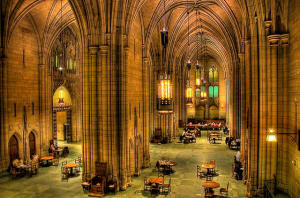
Biological objects and measurement
The core of the objectivization in physics is the coupling of generic objects, as defined by their symmetries, and their corresponding specific trajectories. As for biological phenomena, we posit that they do not possess stable theoretical symmetries. Thus, biological objects are specific in the sense that they are the result of historical and contingent changes of symmetries. This situation will allow us to discuss a specific notion of measurement for biological objects: measurements in biology co-establishes and often stabilize the theoretical symmetries of biological objects.
-

Collagen organization in 3D cultures, from physical to biological self-organization




